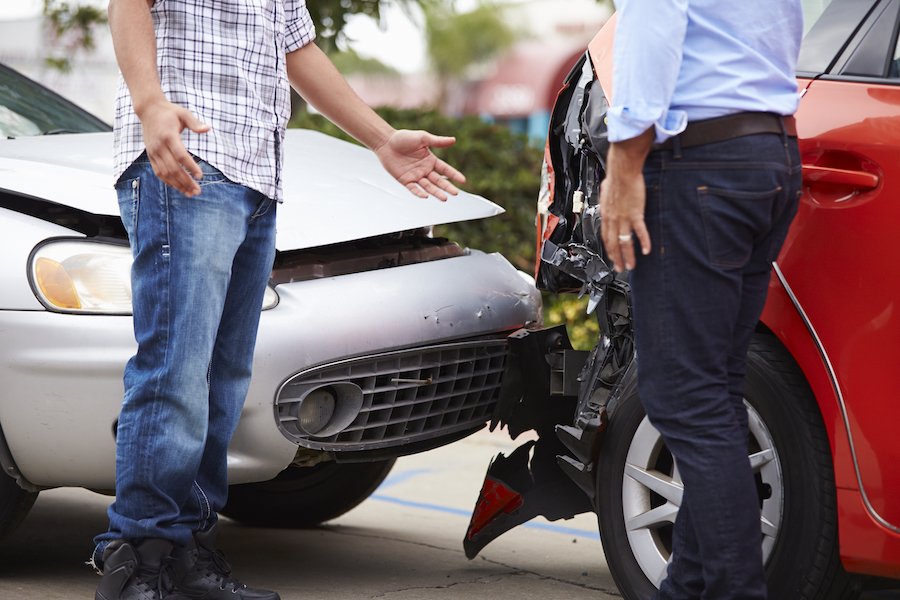
Uninsured / under-insured motorist (UM/UIM) coverage is an optional feature that can be added to an auto insurance policy. In Nevada, it covers losses in case of an accident in which another driver is at fault, but the other party carries no insurance or not enough insurance to cover your losses.
Uninsured motorist coverage comes in two basic varieties:
- Uninsured motorist bodily injury coverage, which covers injuries to people in the car (including medical bills, lost wages, and pain and suffering), and
- Uninsured motorist property damage coverage, which pays for property damage to the vehicle itself.
Why would I need uninsured / underinsured motorist coverage?
Nevada law requires all drivers to maintain at least 25/50/20 vehicle liability insurance. This means the insurance must have minimum coverage limits of:
- $25,000 for bodily injury or death per person,
- $50,000 for total bodily injury or death per auto accident (to all people in the other vehicle), and
- $20,000 for property damage to the other vehicle.
However, approximately 12% of Nevada drivers do not have car insurance.1 Still others maintain only the minimum 25/50/20 coverage, which is often not enough coverage in serious accidents.
If you are hit by an uninsured driver — or by a driver whose policy limits are not high enough to cover your injuries — you may be unable to pay your medical bills, car repair bills and other losses after a Nevada accident.
Private health insurance or coverage through a government program such as Medicare can give you much of the help you need. However, many health insurance plans do not cover services such as chiropractic care and acupuncture. In addition, some policies have high deductibles and co-pays. And health insurance will not pay to fix your car.
To protect themselves, many Nevada drivers purchase the optional uninsured motorist coverage offered by their auto insurer. This coverage is not automatically included in your policy. You must elect to purchase it when you obtain auto insurance and pay an additional premium for it.
| Insurance type in Nevada | What it covers | Required or optional | At-fault party | Minimum coverage |
| Bodily injury or death | Injuries or death of people in the other vehicle | Required | You | $25,000 per person, $50,000 per accident |
| Injury to or destruction of property | Damage to the other vehicle or property | Required | You | $20,000 |
| Med Pay | Your injuries and your passengers’ injuries | Optional | Regardless of fault | At least $1,000 |
| Uninsured/Underinsured motorist (UM/UIM) |
Your injuries and your passengers’ injuries if the other driver has little or no insurance or commits hit-and-run | Optional | Other driver | $25,000 per person, $50,000 per accident |
| Collision | Damage to your vehicle | Optional | Regardless of fault | Up to your car’s actual cash value |
To help you better understand Nevada uninsured / under-insured auto insurance, our Nevada personal injury lawyers discuss the following, below:
- 1. What is uninsured motorist coverage?
- 2. What is underinsured motorist coverage?
- 3. How do I submit a claim?
- 4. Is there other insurance I should consider?
- Additional resources

1. What is uninsured motorist coverage?
Uninsured motorist coverage pays or reimburses you for your compensatory damages if you are injured in a
- car accident,
- truck accident, or
- motorcycle accident caused by a driver who does not have insurance.
Uninsured motorist coverage only applies when you are not at fault for an accident. If the accident was your fault, it will not cover you.
There are two types of uninsured motorist protection you can purchase in Nevada:
Uninsured motorist bodily injury coverage covers damage to people, including you, in your vehicle. Such damages can include (without limitation):
- Your reasonable and necessary medical expenses,
- Lost wages,
- Future lost earning capacity, and
- Pain and suffering.
Uninsured motorist property damage coverage pays for the costs of repairing your vehicle if you are hit by an uninsured driver.
Just like vehicle liability insurance, uninsured motorist coverage in Nevada is available at many different liability limits and with a variety of deductibles.
2. What is underinsured motorist coverage?
UIM coverage protects you in the event the other driver’s insurance limits are not enough to cover your compensatory damages.
Under Nevada law, uninsured driver and underinsured driver coverage are combined into a single policy. If you purchase uninsured motorist coverage in Nevada, you are automatically covered for losses in excess of the policy limits carried by an under-insured motorist.
Example: Oscar is driving on the Las Vegas Strip when he is hit by Peter, who has run a red light. Peter has the minimum 25/50 bodily injury liability coverage required under Nevada law. This means his insurance will pay up to $25,000 for Oscar’s compensatory damages.
Oscar suffers a head injury and is taken by ambulance to the emergency room at Sunrise Hospital. He misses one month of work and has to undergo occupational rehabilitation. His compensatory damages add up to $25,000 and he wants another $10,000 for pain and suffering, for a total of $35,000.
If Oscar does not have UM / UIM insurance, he will only get $25,000 from Peter’s insurance. He can try to sue Peter individually, but Peter may not have recoverable assets.
However, let’s say Oscar has 25/50 UM coverage. That is, Oscar’s Nevada uninsured motorist policy has limits of $25,000 per person for bodily injury (and $50,000 per accident for all people in Oscar’s vehicle). Peter’s insurance will be responsible for paying $25,000 to Peter, while Oscar’s own insurer will cover the other $10,000.

Under most insurance policies, you are obligated to notify your insurer if you are in an accident. You may also be under a legal obligation to report an accident to the police.
3. How do I submit a claim?
Under most policies of insurance, you are obligated to notify your insurer if you are in an accident. You may also be under a legal obligation to report an accident in Nevada to the police. These reports, along with witness statements, photographs and an examination of your vehicle, will help your insurer determine fault for the accident.
Your insurer’s determination is not the final word. If you disagree with its conclusion, your Las Vegas personal injury attorney may decide it is worthwhile to file a lawsuit against your UM insurer. You may also be entitled to a partial recovery under Nevada’s comparative negligence law if you are only partially at fault for the accident.
You will have to prove your medical bills and other injuries to your own carrier. Do not assume this will be easier than making a claim under someone else’s insurance. Insurance adjusters have one job — to keep their expenses down.
Retaining an experienced Las Vegas accident lawyer is the best way to counter an insurance company’s tactics of “deny and delay.”
In the interim, if you have private health insurance, Medicare or Med Pay insurance (discussed below), your medical expenses can get taken care of more quickly. However, your health insurance carrier or Medicare will have the right to reimbursement of amounts it has paid, and they will seek to collect it from the proceeds of your Nevada UM policy.
4. Is there other insurance I should consider?
Medical Payments (Med Pay) coverage in Nevada is another form of optional auto insurance. Med Pay covers injuries to you and your passengers regardless of who is at fault for an accident. It also covers you for injuries while you are a passenger in someone else’s vehicle or if you are struck by a motor vehicle while you are a pedestrian.
Another advantage to Med Pay is that your health insurer (or Medicare) is not entitled to subrogation in Nevada from amounts you receive under your Med Pay policy. As a result, Med Pay insurance is usually well worth the small additional premium.
However, the maximum Med Pay coverage in Nevada is usually $10,000. Thus drivers who can afford the additional premium often maintain UM coverage in addition to Med Pay.
You can also obtain a Nevada umbrella policy if you want coverage in excess of the maximum limits to your UM policy. Umbrella policies are relatively inexpensive and can be applied to all types of insurance coverage you carry at the maximum available limits.
Additional reading
For more information, see our related articles:
- How to get your “car repair bills” paid after a Nevada accident
- How to get your “medical bills” paid after a Nevada accident or injury
- How to file a car insurance claim after an accident in Nevada
- A guide to “bodily injury liability” insurance in Nevada
- How “Med Pay” car insurance works in Nevada
Legal references:
- See, for example, CarInsurance.com, Uninsured drivers by state, March 10, 2016.

